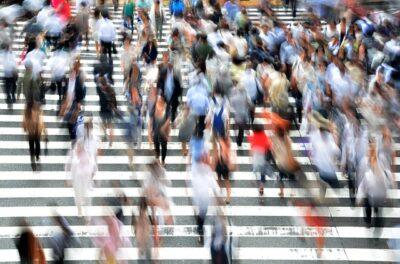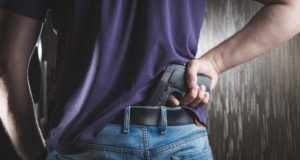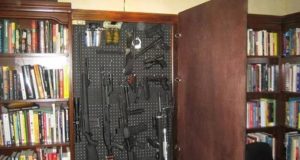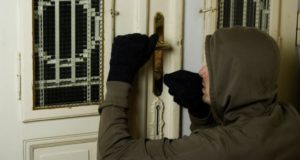Let me start this out with a bit of a test for you. Try to answer the following questions:
- The last time you stopped for gas, how many other cars were getting gas?
- What color socks was your boss wearing today?
- What did the people in front of you and behind you at the grocery line look like?
- How many of your neighbors left this morning, before you did?
- Were there any unusual cars parked on your street when you got home today?
If you can answer any of those questions, without it being pure guess work, you’re doing good. The truth is, though, that most of us can’t. We become used to the situations around us and then just stop noticing them. Then, when something new or different comes along, we don’t even recognize it for what it is.
Instead, we’re looking at our smartphones — checking email, texting friends, or posting pictures to Facebook.
“So, what?” you might say. “Who cares about my boss’s socks or the other people stopped in the same gas station?” If that’s your reaction, trust me, you’re not alone. Most of the adults on this planet would say more or less the same thing. But then, those same people would step on a land mine, without even realizing it until it went “boom.”
The thing is, not being aware of what’s going on around you can be deadly. Just about every dangerous situation we can find ourselves in has some sort of warning. But like the intelligence before the attack on Pearl Harbor, ignoring those warning signs can have grave consequences.
What we need is situational awareness. Situational awareness is nothing more than being aware of what is around you and what the people or things around you are doing. It is being so aware of your surroundings that when something changes, you notice it. It’s knowing what to expect, so that the unexpected stands out. More than anything, it’s seeing things that could be a threat, and analyzing that threat before it can manifest.
Without situational awareness, we’re more likely to get mugged, to get carjacked, to get pickpocketed.
Hand held solar generator provides dependable backup power
I recently re-watched one of the Sherlock Holmes movies, starring Robert Downey, Jr. At one point in the story, his female companion asked him, “What do you see?” To which he responded, “Everything. That’s my curse. I see everything.” That’s part of what made Sherlock so successful. He saw things that others didn’t see. Had he been a real person, rather than just a character in a story, his situational awareness would have served him well.
Ask any soldier who has been in war, and they’ll tell you how important situational awareness is. Seeing things that can be a threat, before that threat manifests itself, can be the difference between life and death, especially in the close environment that is urban warfare.
But situational awareness goes totally against our nature. We are creatures of habit, and we normally go through life without noticing things around us. Few of us can remember details of what happened in the television shows we watched last night, let alone tell what the person in front of us ordered at our favorite coffee house. Thus, we’ll never be a Sherlock Homes and if we are ever put into a position where seeing is survival … we might not make it home.
Developing Situational Awareness
So if situational awareness is so important and is against our nature, how does one acquire it? What can we do, to make ourselves more aware of our surroundings, than we are today?
To start with, we must make a decision to become more aware — not a wishy-washy decision, but a firm one. That, in and of itself, will make a huge difference, simply because we’ll be thinking about the need to be aware. We’ll open our eyes and start looking around us, just because we know that we should.
Still, that isn’t enough. It’s just a start. Building situational awareness requires practice. We’ve got to train our mind to pay attention to what our eyes are seeing. So, we need to develop a series of exercises, which will help us to see. Things like:
- Make a habit of knowing how many people are within 100 feet of you, where they are and what they are doing.
- Count the number of cars of a particular color as you drive somewhere.
- Look at what a co-worker wears to work every day and try to remember it. See how many days’ worth of attire you can recall, and if you can recall the last time they wore a particular shirt or outfit.
- Learn what cars your neighbors drive. Then, make it a habit to look for new or different cars, every time you step out of your home. Look for patterns, to see if certain cars show up at certain times.
Once you are more aware, it’s time to start putting that awareness to use. Start looking at people to see what they are doing and try to evaluate how much of a threat they are. Use a scale from one to 10, with one being no threat at all and 10 meaning it’s time to draw a gun to protect yourself. Rate each person, even if there are many people around you. Then, keep track of those with a higher score, updating your score as you go.
Ultimately, that’s what situational awareness is all about — finding threats. Once it becomes a habit, it will help you in countless ways.
What advice would you add on becoming more situationally aware? Share your tips in the section below:
 Off The Grid News Better Ideas For Off The Grid Living
Off The Grid News Better Ideas For Off The Grid Living





